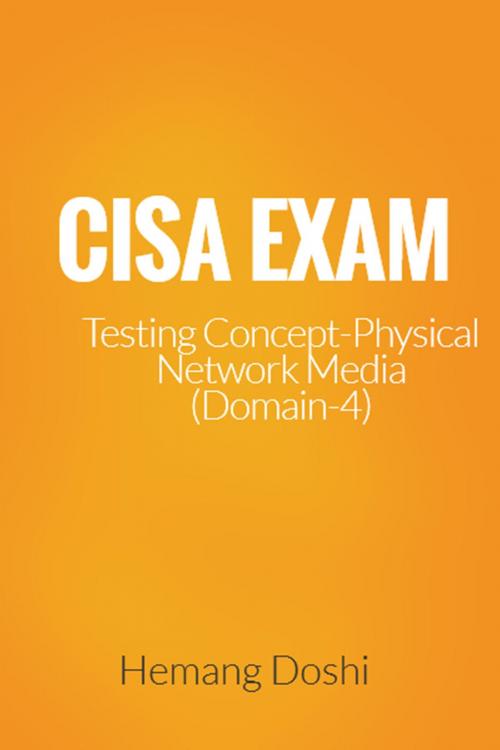CISA Exam - Testing Concept-Network Physical Media (Fiber Optic/ UTP/STP/Co-axial) (Domain-4)
Nonfiction, Reference & Language, Education & Teaching| Author: | Hemang Doshi | ISBN: | 9781370830626 |
| Publisher: | Hemang Doshi | Publication: | July 17, 2017 |
| Imprint: | Smashwords Edition | Language: | English |
| Author: | Hemang Doshi |
| ISBN: | 9781370830626 |
| Publisher: | Hemang Doshi |
| Publication: | July 17, 2017 |
| Imprint: | Smashwords Edition |
| Language: | English |
Point to remember for CISA Exam:
(1)In any given situation, fiber-optic cables have proven to be more secure than the other media. They have very low transmission loss, not affected by EMI and preferred choice for high volumes and long distance calls.
(2)When CISA question is about transmission error that can occur in wired as well as wireless communication, our answer should be attenuation.
(3)It is essential to understand the difference between diverse routing and alternate routing. The method of routing traffic through split-cable facilities or duplicate-cable facilities is called diverse routing. Whereas the method of routing information via an alternative medium, such as copper cable or fiber optics is called alternate routing.
(4)Also, CISA aspirant should be able to differentiate between last mile and long haul. Last mile provide redundancy for local loop whereas long haul provide redundancy for long distance availability.
Point to remember for CISA Exam:
(1)In any given situation, fiber-optic cables have proven to be more secure than the other media. They have very low transmission loss, not affected by EMI and preferred choice for high volumes and long distance calls.
(2)When CISA question is about transmission error that can occur in wired as well as wireless communication, our answer should be attenuation.
(3)It is essential to understand the difference between diverse routing and alternate routing. The method of routing traffic through split-cable facilities or duplicate-cable facilities is called diverse routing. Whereas the method of routing information via an alternative medium, such as copper cable or fiber optics is called alternate routing.
(4)Also, CISA aspirant should be able to differentiate between last mile and long haul. Last mile provide redundancy for local loop whereas long haul provide redundancy for long distance availability.















